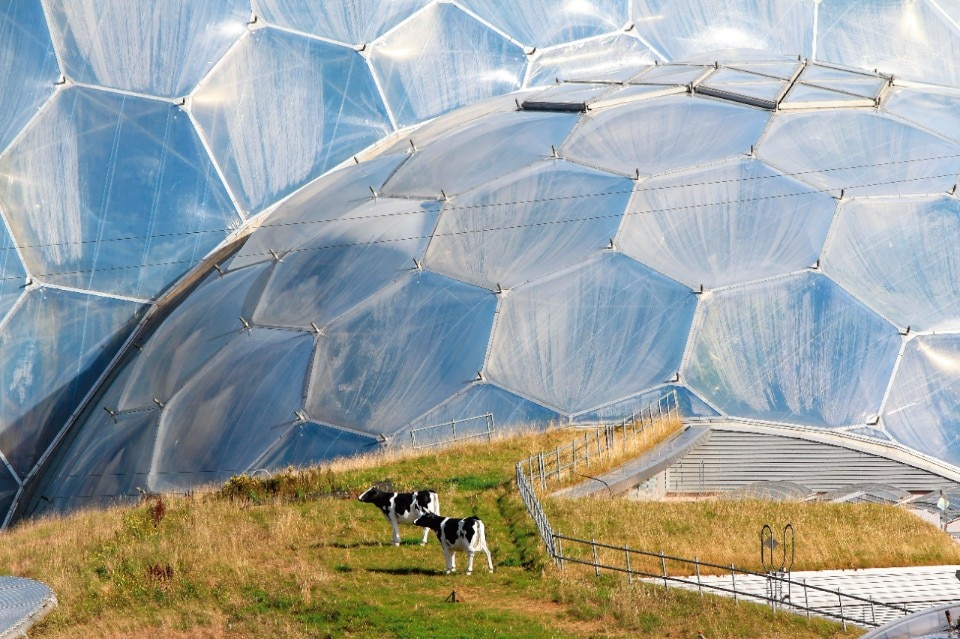July-August is a double issue devoted to plastic and fabric. On one hand, plastic – the enfant terrible of architecture. The 20thcentury material of the future with mobility lighter than air or the inflatables of Biosphere 2, the archetypical interplanetary habitat. But also the poster child of a single-serving culture of wastefulness and an ecosystem drowning in plastic bottles and choking on microplastics.
On the other hand, fabric – architecture’s counterpart, its supporting act, its sidekick. The Lilly Reich to the Mies van der Rohe. Or tensile structures like Frei Otto’s anticlastic canopies of the 1972 Munich Olympics or SOM’s airport terminal in Jeddah (1981). The impermanence of the tent elevated to the monumental scale of public infrastructure. “Just one word: plastics.” That was the only advice Mr McGuire had for Dustin Hoffman in The Graduate in 1967. “There’s a great future in plastics. Think about it.” And he was right. Plastics invaded the world, delivering countless innovations. Airtight seals and watertight gaskets. Membranes. Vapour barriers. Inflatables. If the flat roof and the air-conditioned glass building resulted from the structural freedoms of concrete, steel and glass, it would never have been possible without the availability of plastic membranes.
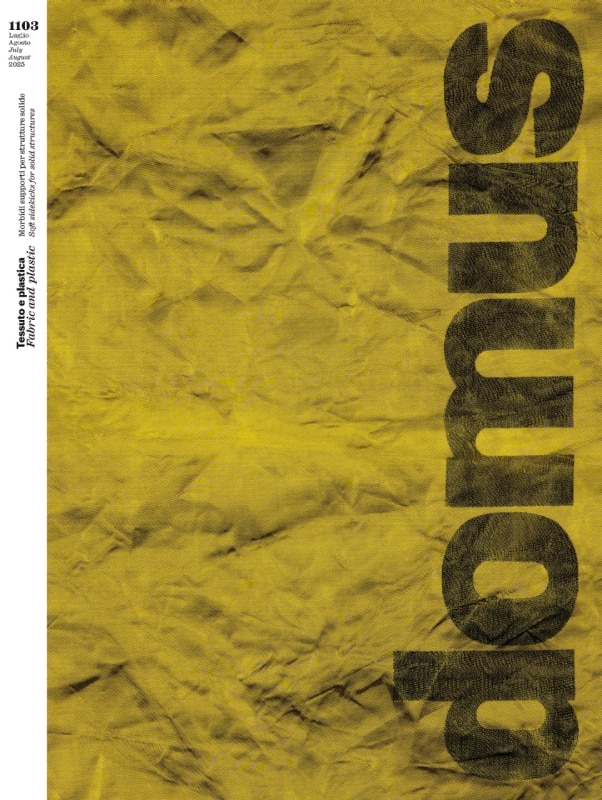
Plastic also became the harbinger of countless material downgrades in the form of fake material finishes, veneers, dibonds, laminates. Beyond architecture, single-serving utensils, plastic bottles, ballpoint pens and children’s toys quickly became the primary content of landfills, spreading to our beaches, the sea and the bellies of albatross. Made from hydrocarbons, it quickly lost its modern allure and became the most hated material in this series. Often for good reason. But the wastefulness is not intrinsically linked to plastic. Merely to the thoughtless application of it. You don’t find Lego bricks in the environment like plastic bottle caps or drinking straws. You don’t even find them in landfills. Because they are designed to never go out of date. My childhood Lego is perfectly compatible with the sets of my son. A sort of aesthetic sustainability that preserves relevance and future compatibility.
The majority of the built environment of the future is already here [...] the challenge for future architects will be reimagining how to inhabit our existing built environment.
As a student in Barcelona, my love for graphic novels led me to Archigram’s “pursuit of a new vernacular, something to stand alongside the space capsules, computers and throwaway packages of an atomic/electronic age.” Danish designer Verner Panton, whose lamps I had grown up with, turned fictions into reality with his colourful interiors like “Visiona II: Fantasy Landscape” (1970) or Der Spiegel’s public spaces (1969). Worlds that celebrated the hue, saturation and luminosity attainable with plastics and fabrics.
When I moved to Holland, I discovered Joep van Lieshout, who used fibreglass to create these survivalist visions of a republic of alternative culture. The rounded corners and continuous colours gave a friendly feeling to elements such as faux tanks and AK-47s.
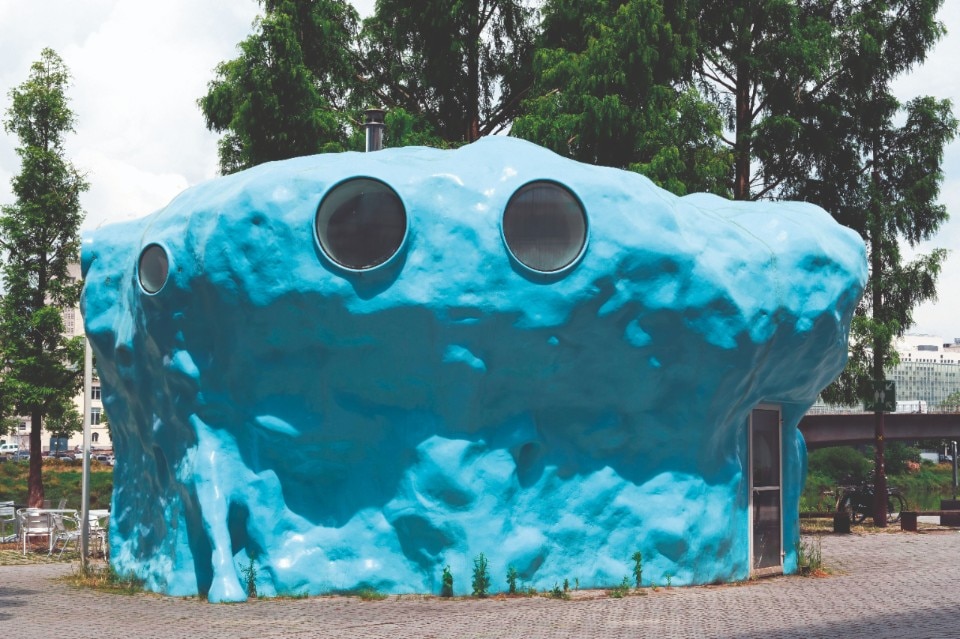
The windmills that frequently make Denmark so energy self sufficient that we export energy to our neighbouring countries are made from fabrics soaked in resin to form ultra-strong pultruded fibreglass. The 236-metrediameter rotor makes them the tallest point in Denmark. Imagine a world where an artefact made from woven fibres soaked in a plastic resin rises above anything else, including hilltops and towers. In summer 1995, I went to Munich and was blown away by the casual enclosures of Frei Otto’s Olympic canopy. The anticlastic double curvature offered a radical new formal vocabulary. Simultaneously rational and expressive, structural as well as sculptural. The softness of the fabric somehow offered an alternative world of forms that weren’t imposed but rather emanated from the tensile tactility of the material.
In 1998, I started working with Rem Koolhaas and the entire studio travelled for the opening of the eponymous Maison à Bordeaux. The Euclidean geometries of the suspended concrete monolith and the void between object and ground were animated by heavy silks, light cottons, jute and lacquer. The curtains designed by Petra Blaisse were an integrated irreplicable element of the architecture. The ingredient that made living in a glass pavilion possible. And desirable.
A year later, I got to work with Petra on the design of the Seattle Public Library. While we were occupied by the gravity-defying acrobatics of making a series of buildings float, Petra and her team were effortlessly designing colourful carpets of magnified photos of grass and leaves, creating an almost domestic experience in the vast public spaces of the Living Room and Reading Room.
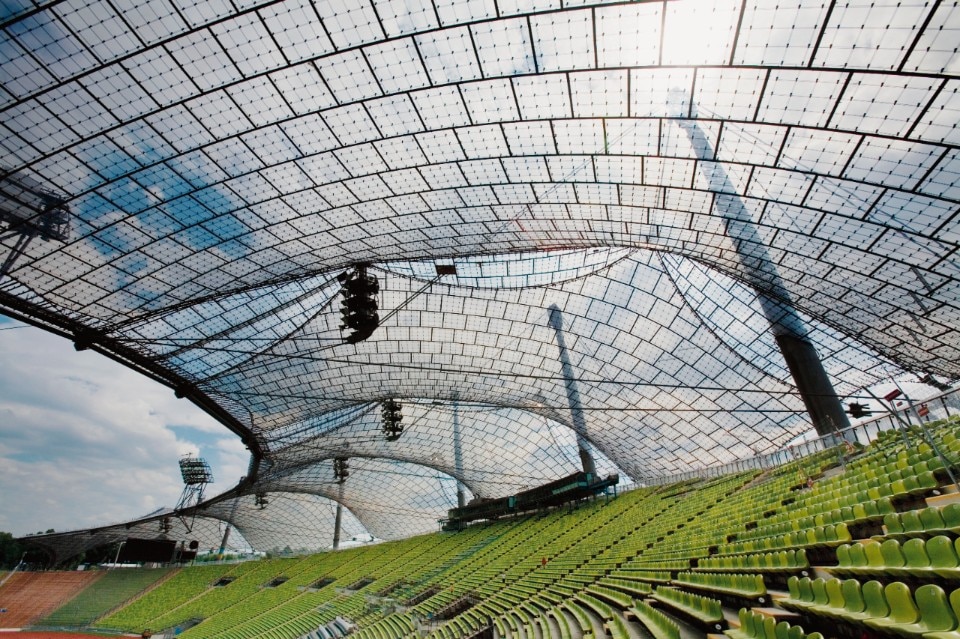
In our own work, we have explored inflatables for their capacity to deliver large impact with minimal means. The reflective metallic skin of the Orb at Burning Man (2018) started like an immaterial mirage, but the electrostatic tension in its surfaces started attracting dust particles and it ended up with the perceived permanence and heavy materiality of a planetary body. And for the Serpentine Pavilion (2016), the speed of construction and the need to disassemble and rebuild made us opt for a kind of fibreglass Lego kit. A total of 1802 identical fibreglass pultrusions are pushed and pulled to form an unzipped wall, pulled apart to reveal a cavernous interior. From some angles an enclosed canyon, from others an open gridwork.
Alejandro Zaera-Polo kicks off our issue with a societal panorama of the politics of plastics. Petra Blaisse shares her experiences of textiles and fabrics, colour and patterns, while Nick Tidball shares how fashion might serve as a vehicle for prototyping material innovation and next-gen wearables. We visit pioneers in architectural plastics and fabrics, José Selgas and Lucía Cano, to hear how their journey into the world of industrial readymade materials began and where it is going. MAD returns with two projects on opposite ends of the scale – a stadium and a single-occupant bubble. Allmannwappner and Menges Scheffler Architekten explore woven fibreglass as a form of arabesque spiderweb, while MVRDV weaves recycled plastic fibres into a giant carpet for public life in Bangkok. Guillermo Santomà and TEST explore an interior combining the tectonics of textile with the solidity of cement, and Erased Studio use a single sheet to provide an expanding and contracting wedding venue.
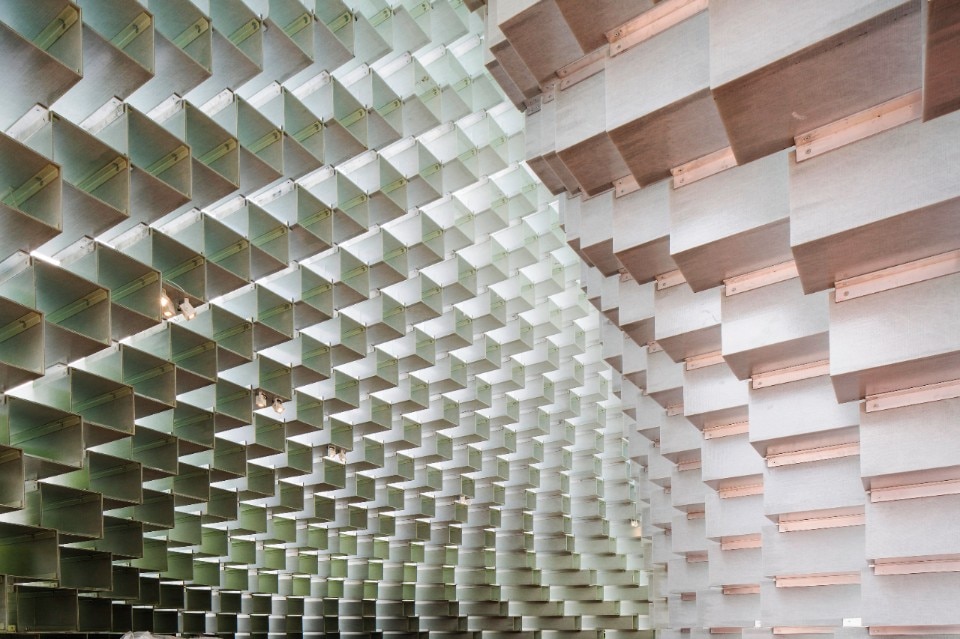
Wolfgang Volz takes us on an odyssey of Christo and JeanneClaude’s monumental textiles at the scale of cities and landscapes. Willo Perron’s Sausage is the sofa equivalent of a scarf that you can wrap around yourself and your family in no premeditated form. Charlotte Kingsnorth and Finemateria explore furniture at opposite ends of the spectrum, from the organic to the Euclidean. Do Ho Suh’s Hubs series is like a BIM model solidified in fabric, while Andrés Reisinger takes over Jeddah with colourful drapes of warm colours. And finally, Christoph Niemann ruminates over the powerful simplicity of the standard Lego brick.
The issue explores the relevance still held in the pliable membranes and soft textiles of plastic and fabric. The majority of the built environment of the future is already here: 8 billion Earthlings of an estimated peak population of 10 billion by 2050. The challenge for future architects will be reimagining how to inhabit our existing built environment. Lighter interventions into the bones of the buildings that have lost their relevance. Ephemeral layers renewing abandoned buildings’ lease of life may be spearheaded by the lightness and reusability, flexibility and mobility of plastic and fabric.
Opening image: Photo Anna Jastrzebska/Alamy Stock Photo


